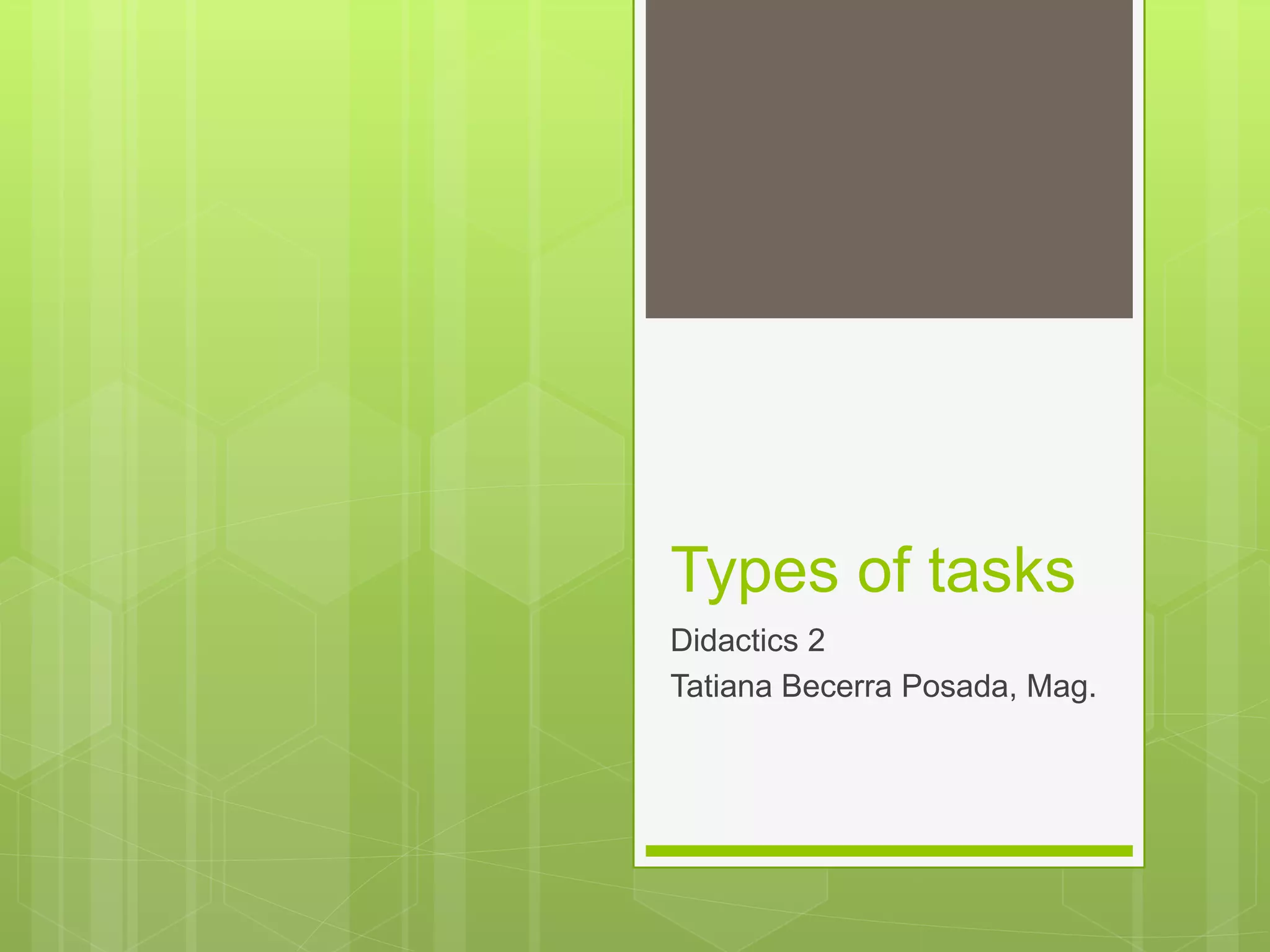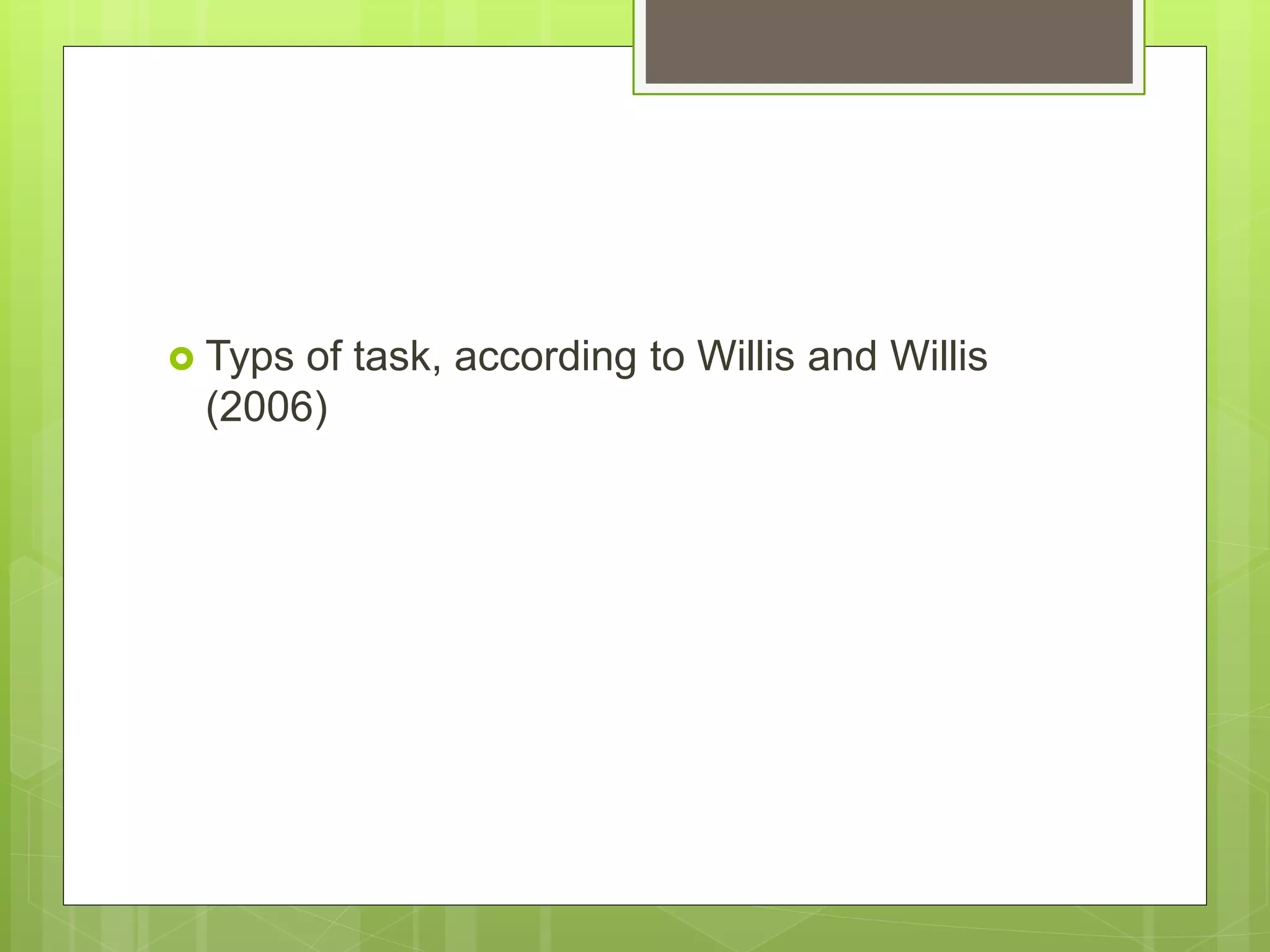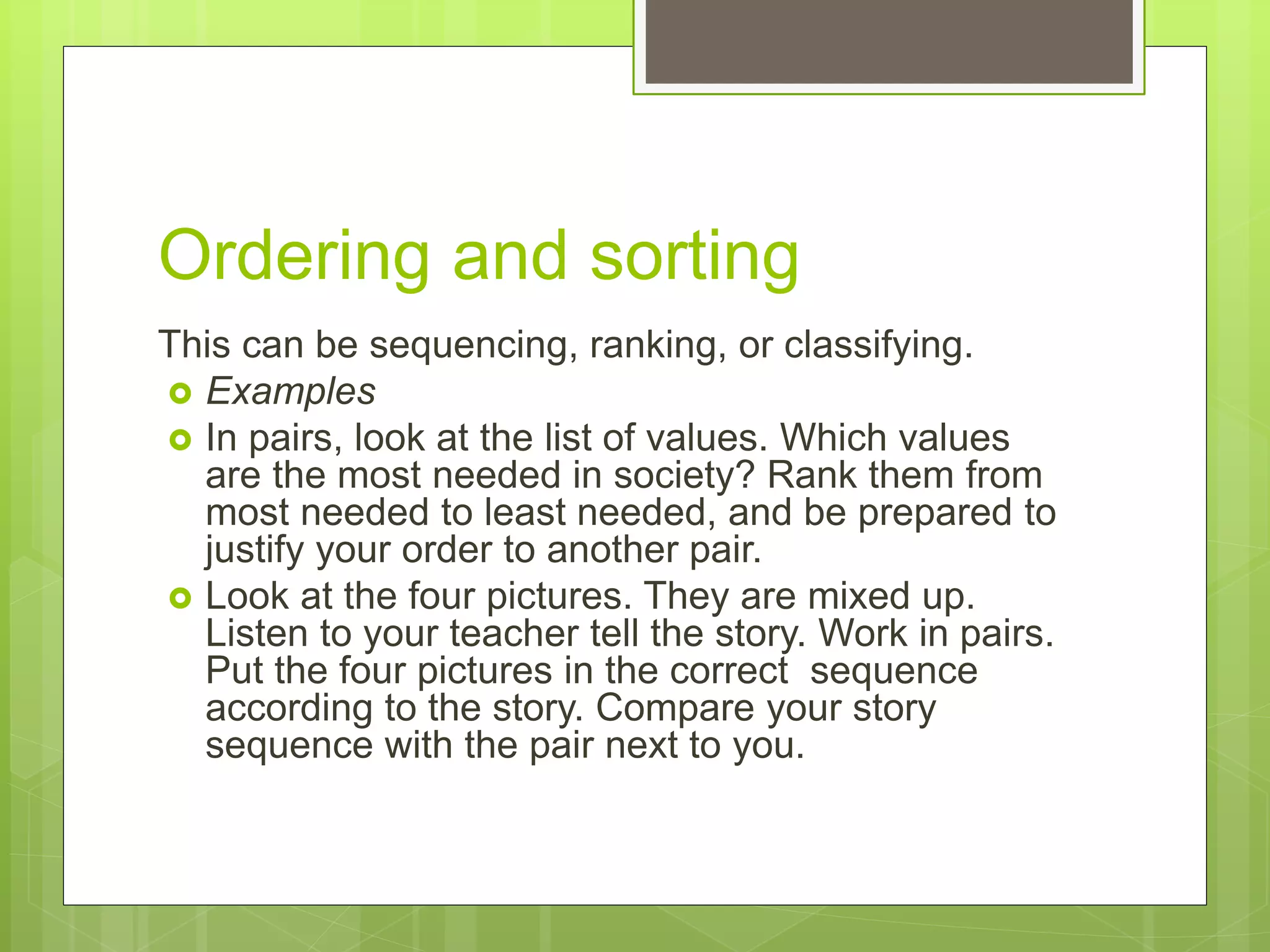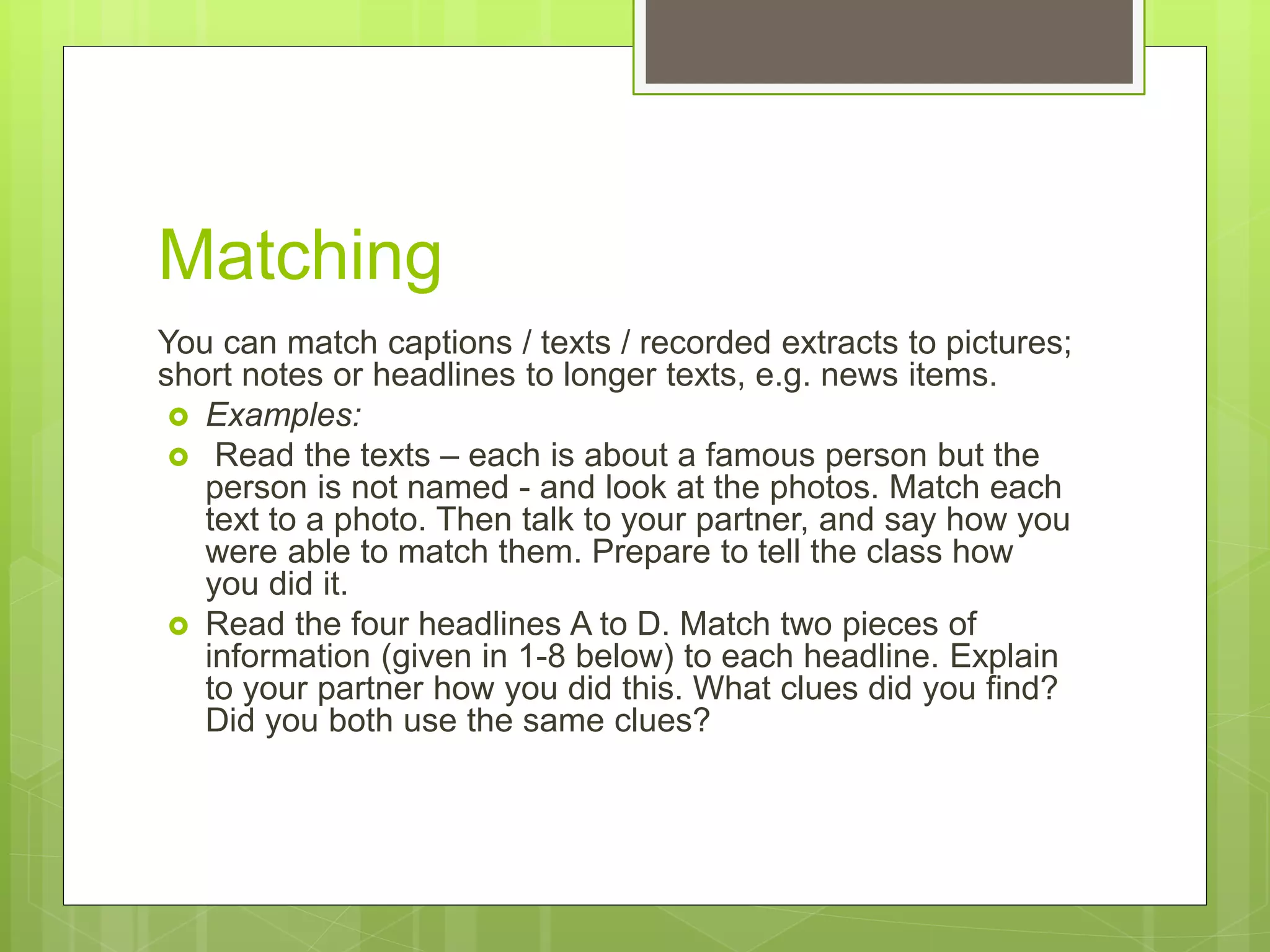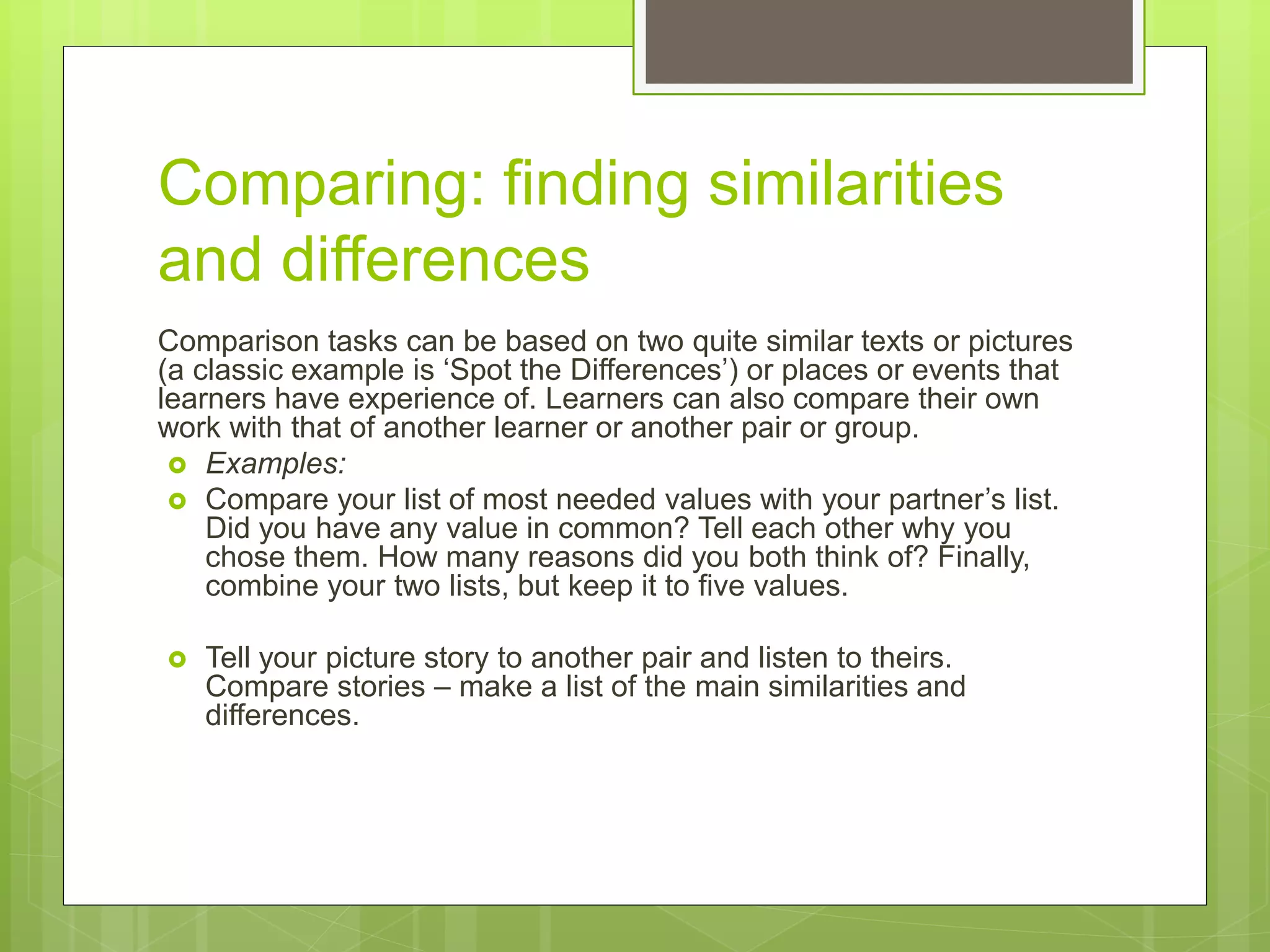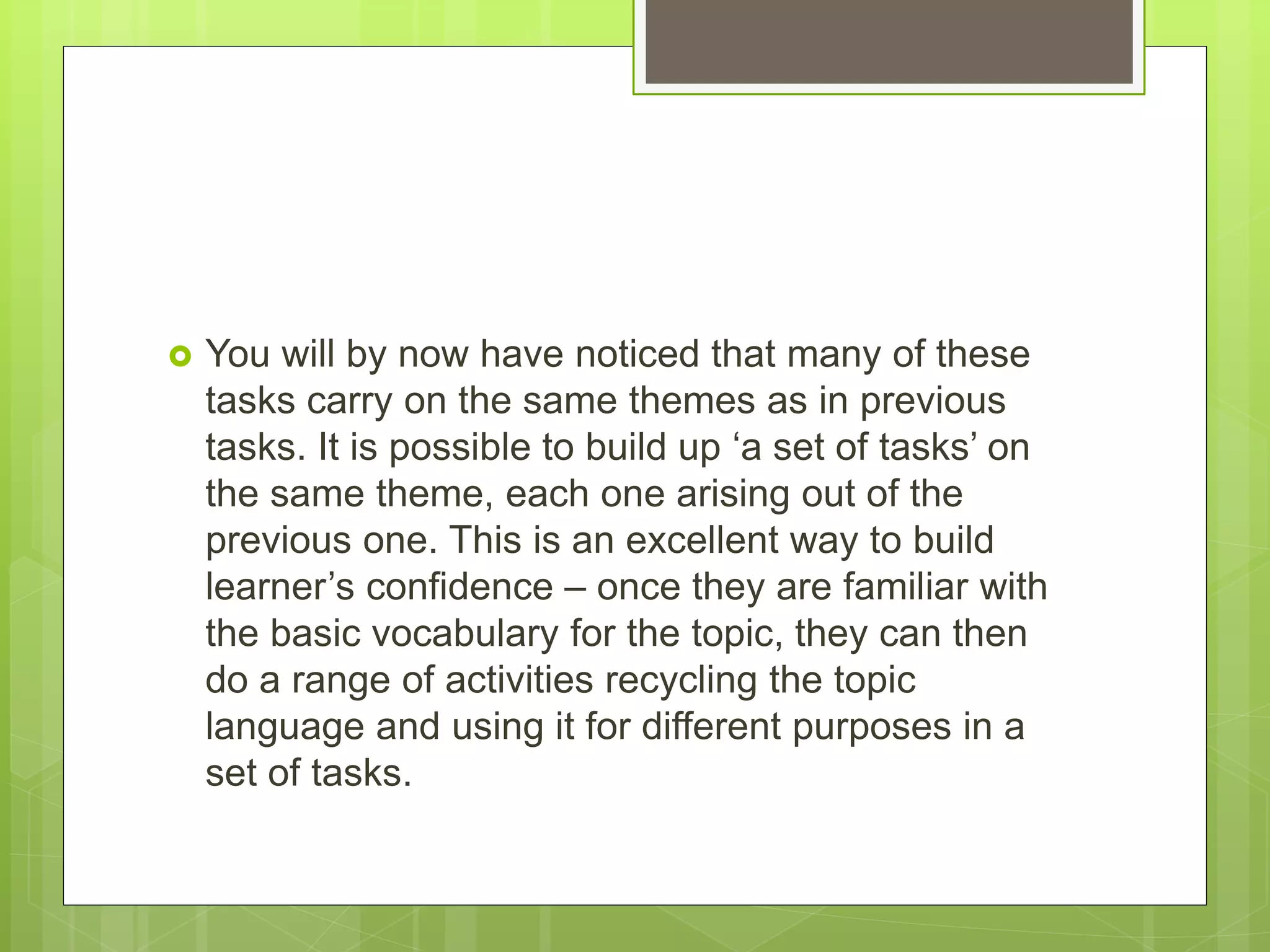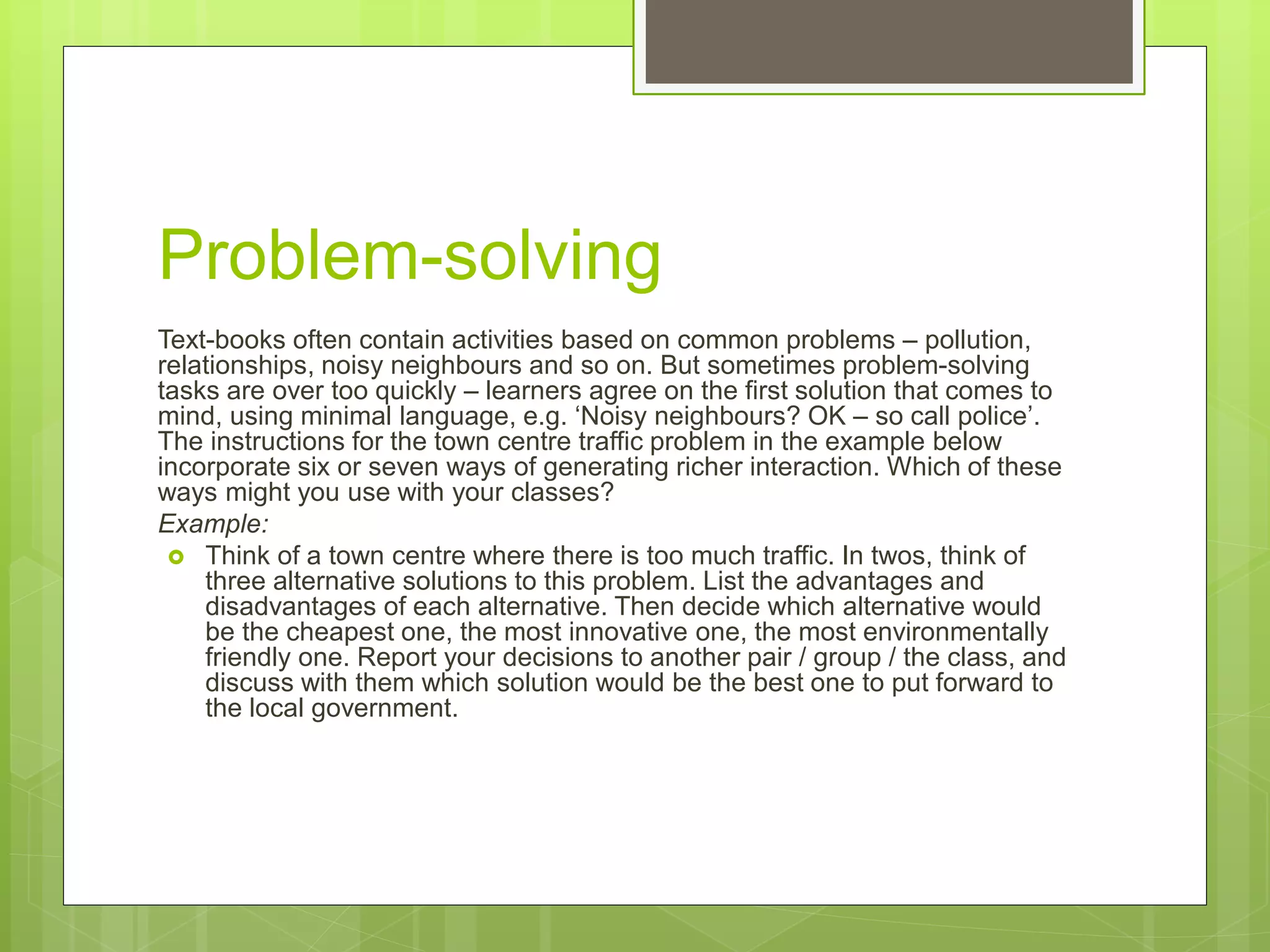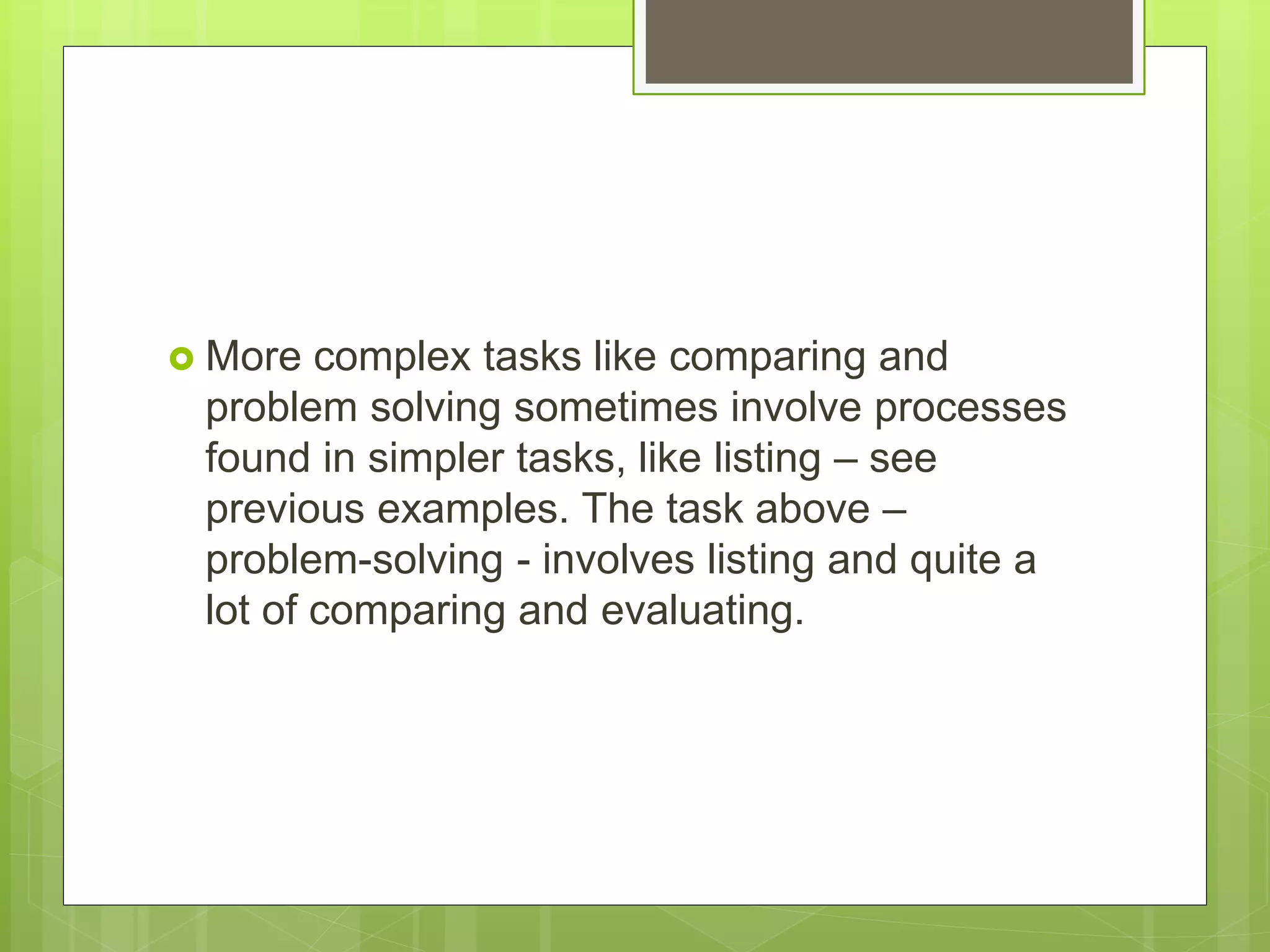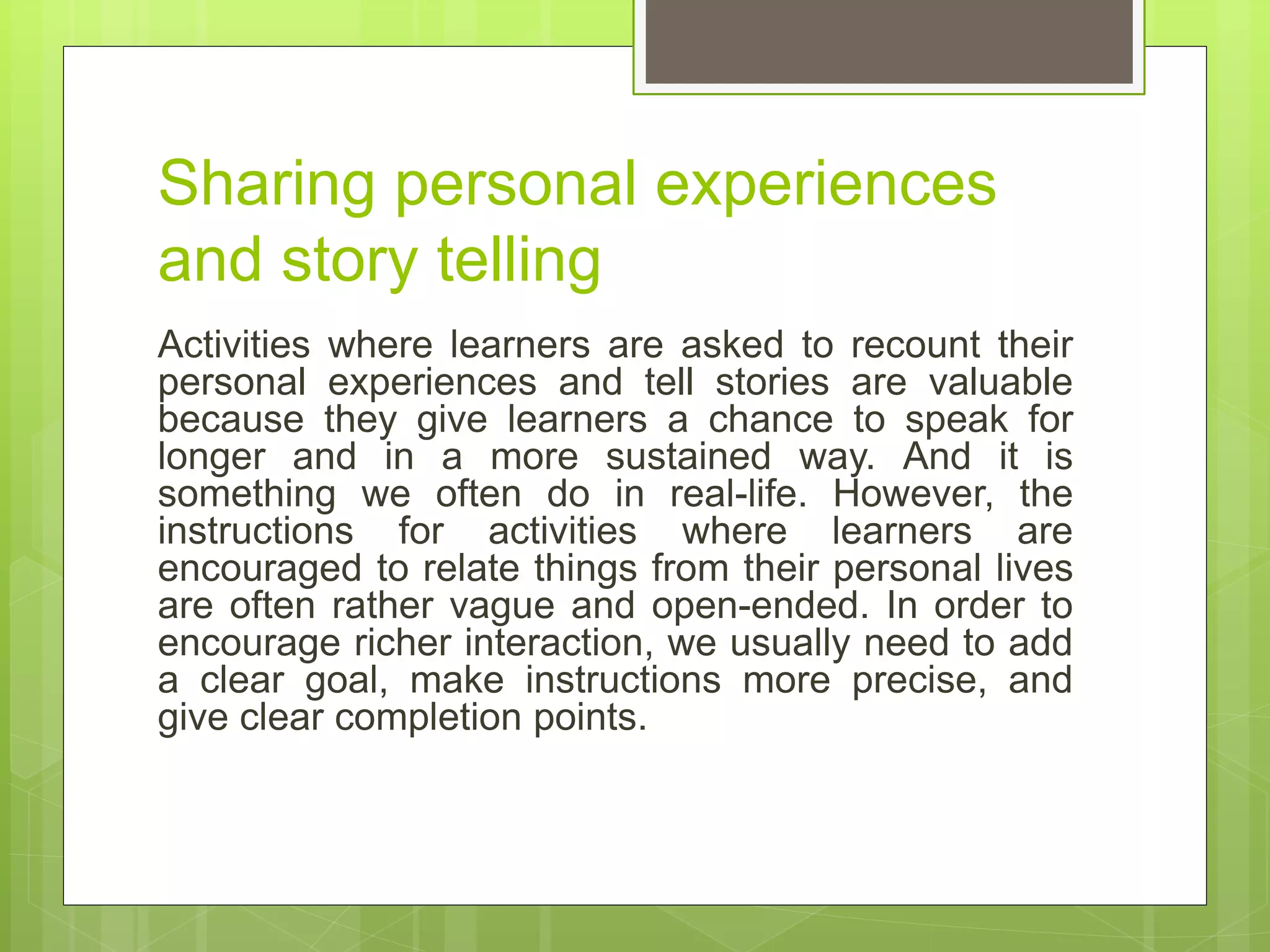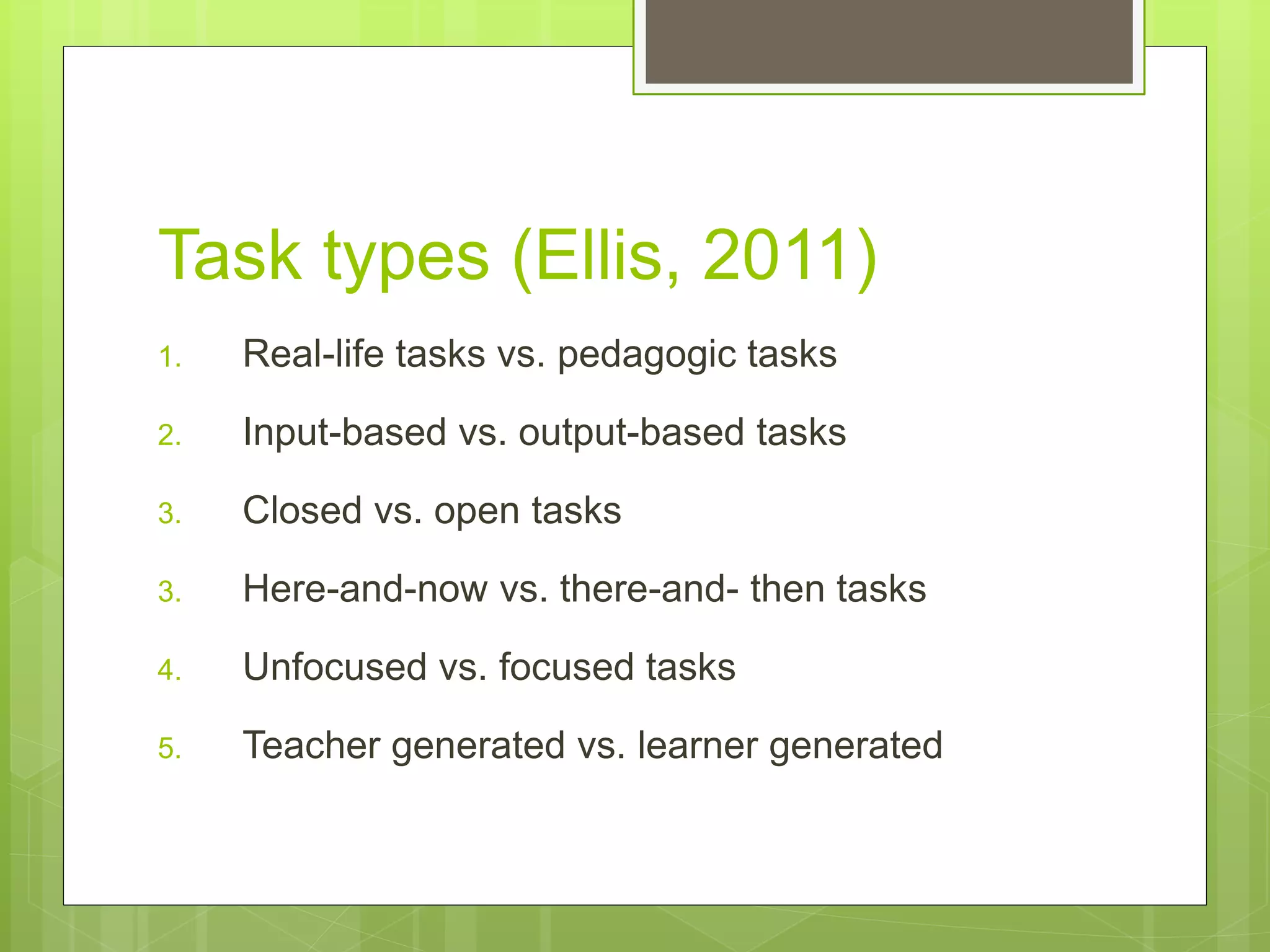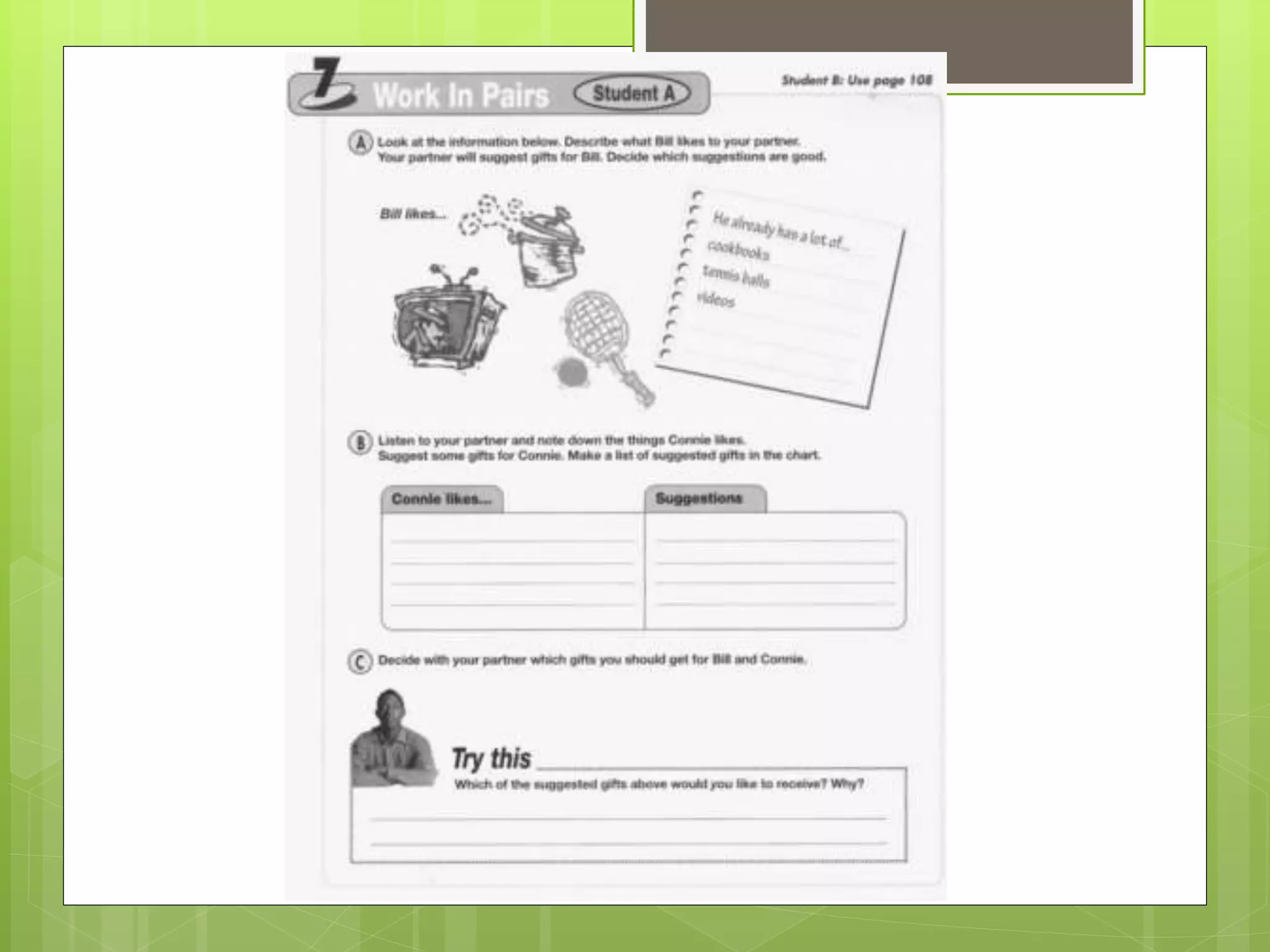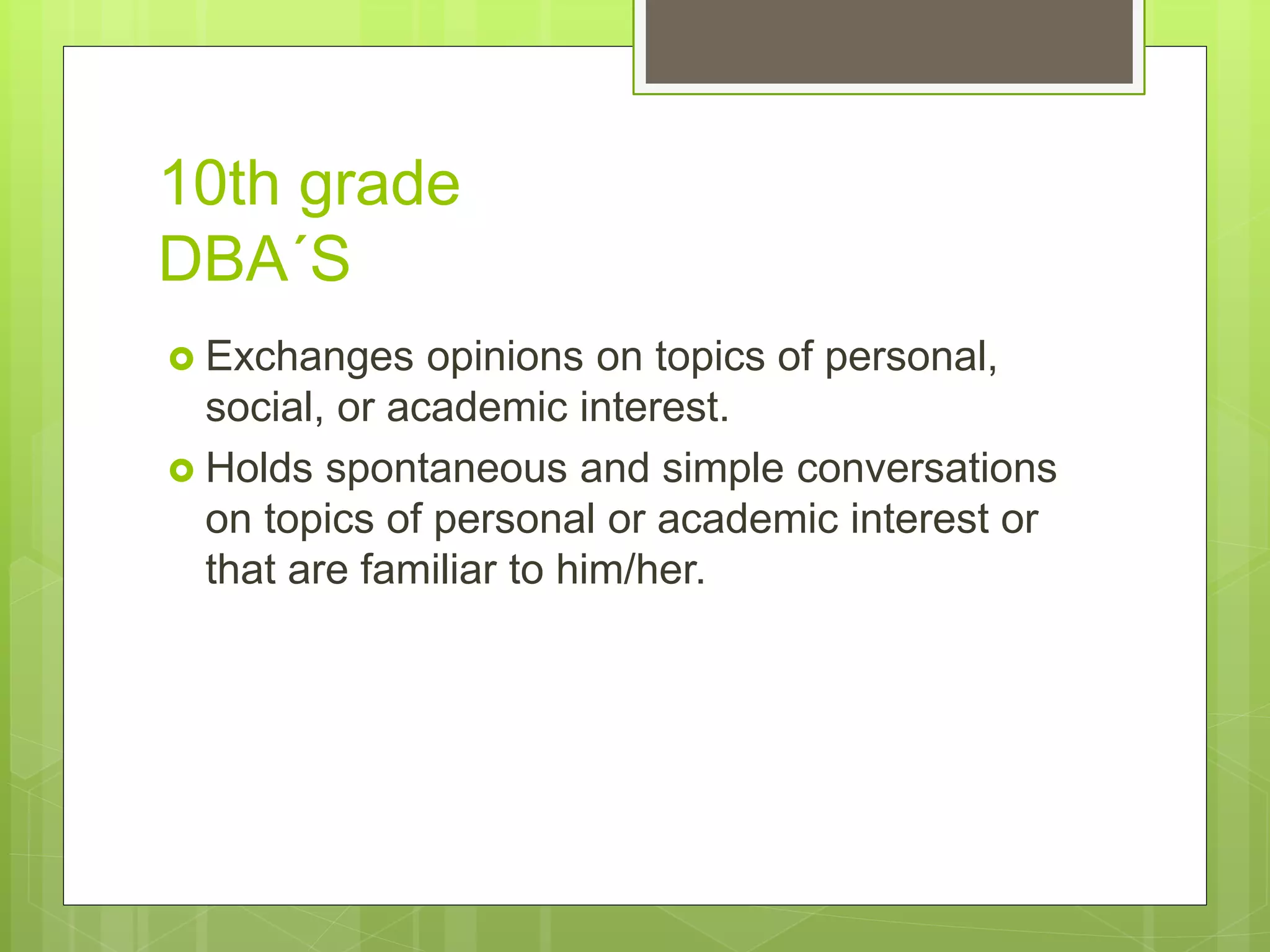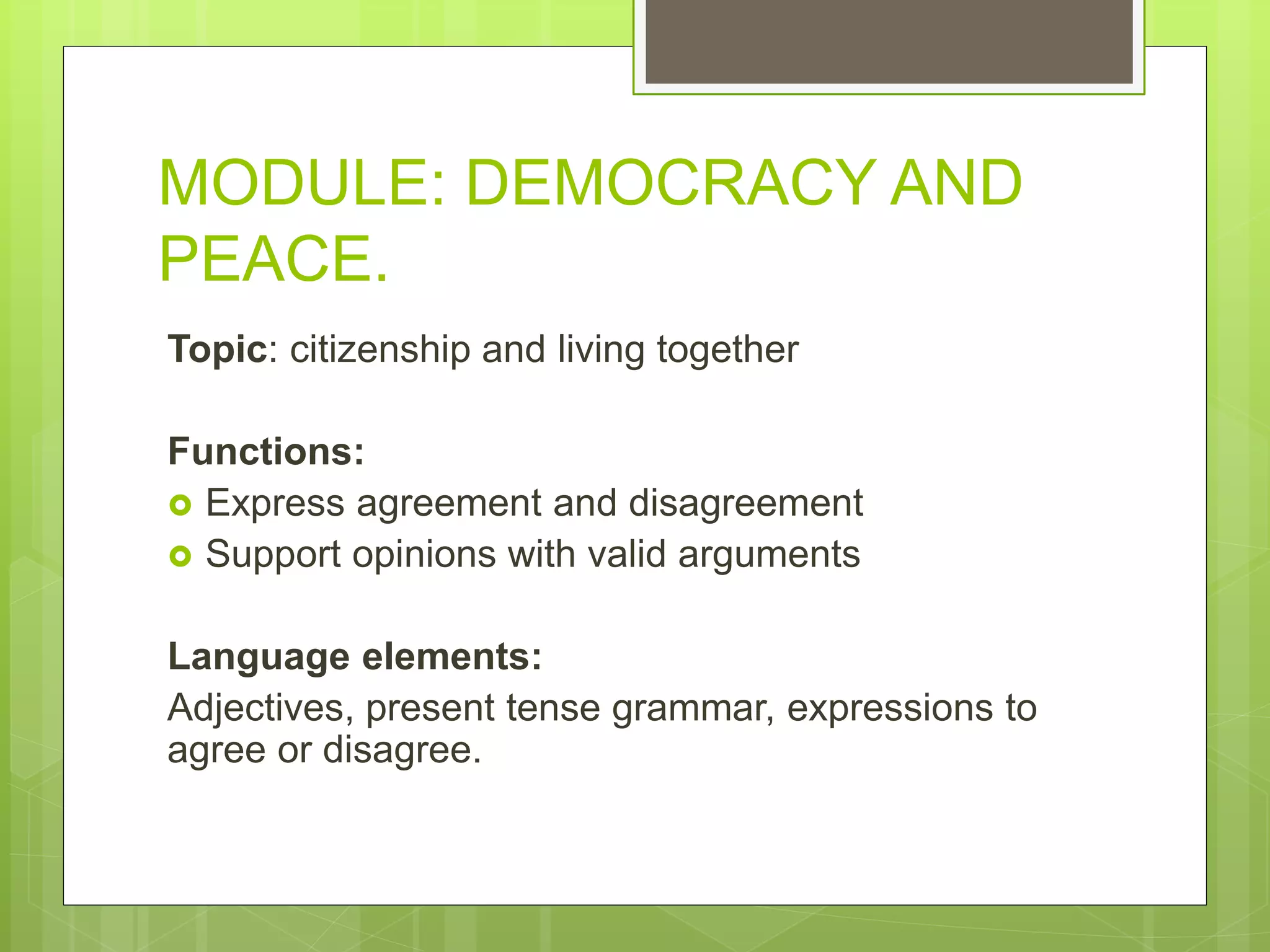This document discusses different types of language tasks and provides examples. It describes tasks such as listing, ordering, sorting, matching, comparing, problem-solving, and sharing personal experiences. Many tasks can build upon each other and recycle similar vocabulary and language functions. Effective tasks provide clear goals and instructions to encourage richer interaction among learners. Real-life tasks are more engaging than pedagogical tasks. The document concludes with an example module on citizenship and living together that incorporates discussing opinions and supporting arguments.
